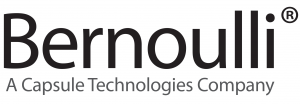ECRI: Top 10 Patient Safety Concerns for Healthcare Organizations
The ECRI Institute released its latest report, 2017 Top 10 Patient Safety Concerns for Healthcare Organizations. The report’s goal is to help hospitals and health systems decide where to focus patient safety initiatives.
We encourage you to read the the entire ECRI on the Top 10 Patient Safety Concerns, but wanted to highlight a few key areas.
Information Management in EHRs (#1)
“Healthcare organizations must approach health IT safety holistically. …Strategies include ensuring that users understand the system’s capabilities and potential problems [and] encouraging users to report concerns and investigating those concerns.”
Quality and reporting in many hospitals and health systems rely on individual recollections after an incident, which can be inaccurate or incomplete. The appropriate technology can provide healthcare organization with objective data to assess any incident and make measurable, team-focused improvements to the reporting and resolution process.
Patient Safety Resource: Case study—Achieving Clinical Clarity from Ventilator Overload. The Hospital for Special Care was able to achieve real-time surveillance of more than 100 patients on ventilation support. In addition, the hospital was able to use collected data for reporting to its audit committee, which monitors ventilator management performance and identifies potential areas of need.
Unrecognized Patient Deterioration (#2)
“Organizations can develop condition-specific protocols for an organized and speedy response and analyze work systems and processes to identify and address barriers.”
Several alarm techniques and strategies exist for identifying at-risk patients, including smart alarms. These allow for the analysis of the alarm signals themselves, but also the high-fidelity physiological data associated with them, including time trends, in-depth alarm sensitivity and statistical and predictive analysis.
Patient Safety Resource: White paper—Clinical Alarm Management & Reduction: Eliminating alarm proliferation in hospitals and health systems. This white paper outlines the current state of clinical alarm management, demonstrate how to establish a baseline of a hospital’s alarms, and explores innovative alarm reduction strategies to promote more efficient workflow, increase patient safety, and put hospitals on the path toward real-time patient monitoring and intervention.
Implementation and Use of Clinical Decision Support (#3)
“On an ongoing basis, organizations should monitor the effectiveness and appropriateness of CDS alerts, evaluate the impact on workflow, and review staff response to alerts. The tool should be redesigned as necessary.”
The truth is that the overwhelming majority of alarms endured by nurses, respiratory therapists and other caregivers have nothing to do with a patient’s medical condition. However, the fatigue and desensitization that results from caregivers responding to hundreds—or even thousands—of alarms every day is a clear and documented threat to patient safety. Technology can help get alarms under control—but it is not enough. Clinical and IT leadership, including nurses, respiratory therapists, biomedical engineers and information technology staff, must come together to develop the policies and standards necessary to bring meaning and action back to clinical alarms.
Patient Safety Resource: Article—“Why it’s time for an immediate hospital alarm intervention” by Jeanne Venella, DNP, MS, RN, CEN, CPEN, Chief Nursing Officer, Bernoulli. Published May 2016 in DOTMed.
Opioid Administration and Monitoring in Acute Care (#7)
“Organizations may wish to evaluate and address work system and process factors that may contribute to opioid administration errors. For certain patients, capnography or minute ventilation monitoring can supplement nurse monitoring.”
Both patient-managed and staff-administered pain medication are necessary for the patient’s well-being in the hospital. However, their use presents real risk of overdosing and death, especially for patients with complex chronic conditions and co-morbidities. Continuous monitoring can help improve patient safety while keeping the patient comfortable, but careful implementation is necessary to avoid a negative impact on the staff and environment the patient depends on for care.
Patient Safety Resource: Article—“Achieving Real-Time Respiratory Depression Surveillance of Post-Surgical Patients” by Jeanne Venella, DNP, MS, RN, CEN, CPEN, Chief Nursing Officer, and John Zaleski, PhD, CAP, CPHIMS, Executive Vice President and Chief Informatics Officer, Bernoulli. Published Feb. 8, 2017 in PSQH.
Inadequate Organization Systems or Processes to Improve Safety and Quality (#10)
“Proactive strategies can be used to examine processes, identify what can go wrong, and make the process less vulnerable to error before mistakes can occur. Strong preventive strategies, such as standardization and automation, should be explored.”
Technology plays a critical role in patient safety, but it is one piece of a larger solution. Achieving measurable progress in patient safety requires that hospitals identify and support internal champions in all relevant departments including, nurses, respiratory therapists, biomedical engineers, and information technology staff. These interdisciplinary experts must come together to assess the current state of patient safety environment—by unit and facility—including reviewing current protocols; identifying and developing targets for improvement; and evaluating appropriate interventions, policies, and standards. Without the input and expertise from hospital leadership, any patient safety solution will fall short of institutional goals and may put full adoption at risk.
Patient Safety Resource: Webinar—“The Threat of Alarm Fatigue on Patient Safety.”
Final Thoughts
Bernoulli is dedicated to providing clinicians with the technology-enabled capabilities necessary for improving patient safety in real-time. Our commitment to interoperability and vendor-neutral, open architecture both with regards to device connectivity and delivery of data and analytics to other systems of record enables hospitals and health systems to benchmark measureable, sustained improvements to patient safety.
As always, be sure to review our Resource Center to access real-world case studies, white papers, thought leadership and published papers and articles that will help your team make informed decisions about investing in enterprise-wide medical device connectivity, alarm reduction, patient safety analytics—all based on continuous, real-time data.
Follow us on LinkedIn and Twitter for additional news, tools and resources.

